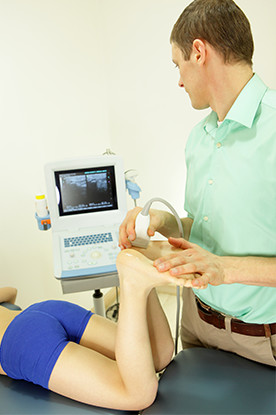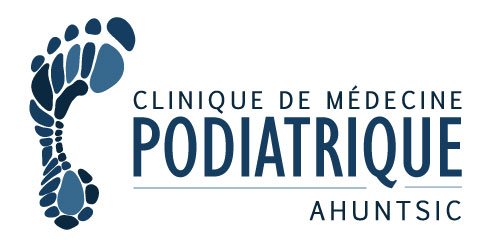
What is ultrasound?
First of all, ultrasound is non-invasive, radiation-free imaging. It can be used to visualize soft tissue, such as ligaments, tendons, muscles, as well as to confirm the presence of masses. It can be used safely on children and even pregnant women. It is easily accessible and provides results almost equivalent to magnetic resonance imaging (MRI). Quicker and more affordable than MRI, ultrasound can be used even on patients with screws or joint implants, regardless of their physical condition.
Ultrasound, by assessing the quality of the different structures, allows for an accurate diagnosis, eliminating differential diagnoses and adjusting the treatment plan accordingly. It also provides an added value for the patient by helping them understand their treatment plan associated so they can discuss it with the podiatrist in a more informed manner.
How is an ultrasound session?
A gel is applied on the skin to facilitate the transmission of waves (inaudible by humans) when using the probe. The sound wave, emitted by the ultrasound, is reflected on the structures (muscles and bones) and recorded by the probe. Many mammals use ultrasound to locate themselves, such as dolphins.
What is the purpose of ultrasound in podiatric medicine?
- Clarifying the diagnosis by eliminating other probable causes.
- Ensuring proper follow-up for an injury, such as an Achilles tendon injury or tendinitis.
- Performing injections guided by imagery. The injection is viewed in real time in a safe and precise manner for optimal results.

Here is a non-exhaustive list of examinations that podiatrists can make using ultrasound:
- Condition of the ankle ligaments during a sprain
- Artery and blood flow issues
- Surface of the bone cortex in the case of stress fracture
- Soft tissue masses like cyst, bursa/bursitis
- Injury to muscles and tendons
- Forefoot pathology: Morton’s neuroma, tearing of the plantar plate, synovitis, capsulitis or tendinitis
- Hindfoot pathology: plantar fasciitis/heel spur, Baxter’s neuritis or bursitis


Accessible
This technique is non-invasive and available to all patients at the clinic, regardless of their physical condition.

In-depth understanding
Ultrasound improves the quality of treatment by sharpening the diagnosis using highly precise images and allow a better visualization for the patient when necessary.

Safe injection
Ultrasound allows precise and safe injections for optimal results.
To use ultrasound, podiatrists must follow specialized training and obtain a certification in Foot Ultrasound. Podiatrist Dr. Legault holds this certificate and has attended several training sessions on the matter. Thus, he can perform ultrasound examinations of the foot and ankle at the clinic. ( Dr Lapointe will have his certification after December 2020).



